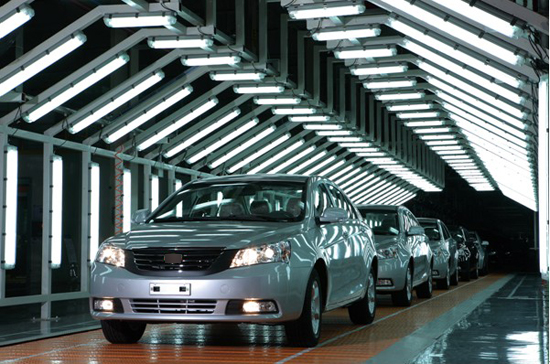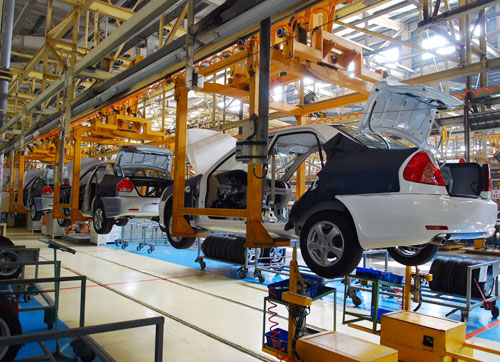Two years ago, India’s automobile manufacturing was the second fast growing market that came after China, but it is now dogged by problems of big discount, large stock and long-term excess capacity due to high interest rate, rising oil price and economic downturn. In the previous fiscal year, the automobile sales in India declined for the first time over the past decade.
India’s economy slows down and most of the Asian countries restrain inflation by raising the interest. The rise in commodity and crude oil prices as well as other factors also curbs the demands from India’s car market. Sales data of the first half of 2013 indicate that slump has appeared in India’s auto sales market; consequently, its upper stream industry—manufacturing of auto die castings is hit as well.
In February, the sales volume of passenger cars in India was 158513 units, a sharp year-to-year decline of 25.7%. Specifically, Maruti Suzuki India had a fall of 10.9%, from 94118 units to 83865; Hyundai Motor India Ltd. had sales of 33936 units, down by 7.42%; Tata Motors’ sales dramatically dropped from 28236 units to 7769 units, a decline of 72.5%. In June, Indian auto market suffered an eight-month consecutive decline without any signs of recovery. Inidia’s car sales in June were 139,632 units, 9% less than a year earlier. During the first fiscal quarter this year (April to June, 2013), only 434,551 units of vehicles were sold in India, a year-to-year drop of 10%.

India’s large population, ever increasing per capita and great long-term potential probably still tempt the world’s major automakers such as Ford and Volkswagen to hold to the Indian market. However, the continuous economic woe of India and disappointing car sales over the past fiscal year may cause other manufacturing giants to cut their further investment.
“Like other industries, the growth rate of automobile manufacturing is dropping significantly,” said R.C. Bhargava, CEO of Maruti Suzuki India.
Bhargava said, “Every industry has been going down in recent two to three years and people have to cut costs, save money and become more efficient.” Experts once predicted that India’s car sales for 2020 would increase from the current 1.9 million units to 9 million units, but this target tends to be unrealistic in view of the current situation. India’s automobile manufacturing has to undergo a tough time in the near future.
Senior executives of automakers say that unless the bank rate is cut significantly and India’s economy recovers substantially, the Indian car market will continue its weakness.

HYUNDAI Motor Company, the second largest automaker in India, was just immune to this crisis and remained a small growth; while its rivals including General Motors, Ford, Toyota and Volkswagen saw a sharp decrease as much as 20% in sales.
The first half-year sales statistics 2013 shows that Korea’s automobile industry is developing rapidly. According to data released by Korea’s motor industry, five Korean automakers sold 651,878 cars overseas, a year-to-year increase of 24.8% and 104,377 cars domestically, up 8.2%. HYUNDAI Motor Company had overseas sales of 362,509 units, up 30.5% and domestic sales of 50,211 units, up 11%. Kia Motors Corporation had overseas sales of 224,322 units, up 26.8% and domestic sales of 36,250 units, up 6%. Analysis suggests that the Korean government has taken different measures to protect local market and enterprises, encouraged export of Korean cars and erected trade barriers to limit the import of foreign cars, which protects Korean automakers from fierce competitive pressure. In addition, the Korean government vigorously strengthens the quality of the vehicle products to improve the product image, positively finances the automobile R&D projects, supports purchase and merger of auto parts companies and introduces advanced auto parts companies to run factories in Korea. Furthermore, Korea-made auto parts have more apparent advantages in product quality and price; the demand from overseas companies begins to increase. The rapid development of Korea’s auto manufacturing will bring more opportunities for its upper stream industries.
(from Internet)





